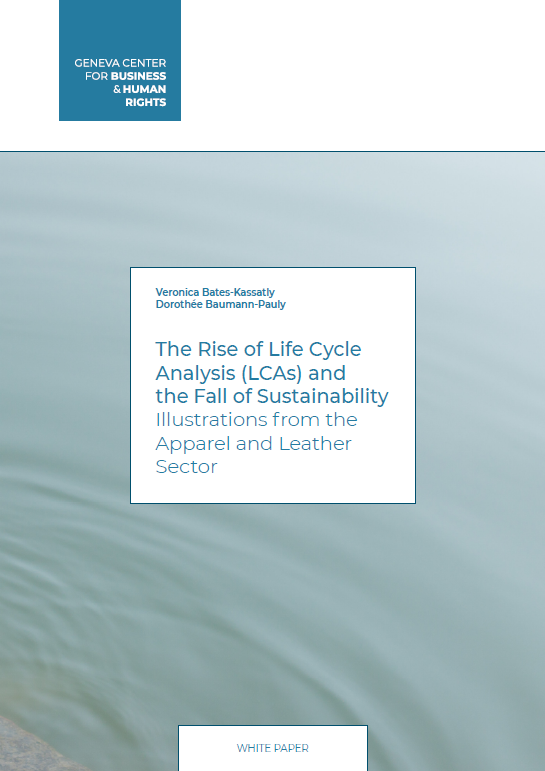The Rise of Life Cycle Analysis and the Fall of Sustainability - Illustrations from the Apparel and Leather Sector
Drawing on their two earlier reports, The Great Greenwashing Machine - Part 1: Back to the Roots of Sustainability and The Great Green Washing Machine Part 2: The Use and Misuse of Sustainability Metrics in Fashion, Veronica Bates-Kassatly and Dorothée Baumann-Pauly publish this third paper - The Rise of Life Cycle Analysis and the Fall of Sustainability - Illustrations from the Apparel and Leather Sector (PDF) - which attempts to condense and clarify the risks of basing sustainability claims on Life Cycle Analysis (LCA).
As the white paper demonstrates, LCAs are not absolute. From any given set of raw data, there is no single, unique value that will automatically be generated for greenhouse gas emissions, water consumption, eutrophication, etc., and vastly different purported impacts can be obtained from the same data, by using different models, methodologies, and/or boundaries.
It is the quality of the data that goes into an LCA that determines the quality of the output. Only if the data are representative and reliable are the outputs meaningful. Yet the sector is currently dominated by the use of commercial indices and LCAs. Many are behind paywalls, and provide no transparency as to the methodologies and boundaries used, or the independence and robustness of the underlying data.
Closer examination reveals that data quality is oftentimes poor and the purported impact values are, in many cases, unsubstantiated and misleading. Moreover, since LCA outcomes cannot be compared unless the methodologies and boundaries are identical, the numbers currently bandied around, from the Sustainable Apparel Coalition’s (SAC) Higg Materials Sustainability Index (Higg MSI) – the most widely used index in the global apparel and leather sector – to the individual product claims on many brand and manufacturer websites, are in fact, at best meaningless, at worst pernicious.
The analysis is particularly relevant at this point in time, as legislation is currently proposed on both sides of the Atlantic that relies on commercial databases. The New York Fashion Act will use metrics underpinned by the Higg MSI and the Higg Product Module (PM). These in turn draw from the same databases as underpin the EU Product Environmental Footprint (PEF). The latter are in evolution, but the decision as to which data will be used remains in the hands of LCA experts, not in the hands of experts in climate science, agronomy, or development.
This paper demonstrates that this approach is misguided, and we strongly recommend that all legislation be postponed until this is rectified. If not, the use of misleading and unsubstantiated data will almost certainly result in well-intentioned legislative measures which will not reduce global warming - indeed, may even augment it, along with global poverty and inequality.
Authors: Veronica Bates-Kassatly & Dorothée Baumann-Pauly
Date: 28 July 2022
Testimonial
Without this report, we would thus probably not have been able to take on the case against the Norwegian retailer Norrøna Sport AS and the case against the Sustainable Apparel Coalition (SAC). The report provided us with the necessary facts to confront the SAC with before we reached our conclusions, and we based our initial case and review on this report. The report is referred to in our correspondence in the case with the Norrøna and SAC, and findings from the report was discussed with Norrøna and the SAC before our conclusion in the case was made. The report was however not referred to in our concluding letters, since the SAC had some objections to the report being “neutral”. Instead of going into an argument on the “neutrality” of the report, we merely based our conclusion on facts presented in the report, as the facts identified by the report stood fine alone.
Tonje H. Drevland, Norwegian Consumer Authority, Head of Section
Media Coverage
- International Leather Maker, Do we have the right information on livestock?, by Mike Redwood, 3 August 2022
- Forbes, How Fashion Week Should Really Embrace Sustainability, by Michael Posner, 8 September 2022
- TextilWirtschaft, Ökobilanzen können nicht die Nachhaltigkeit messen, by Kirsten Reinhold, 21 October 2022

